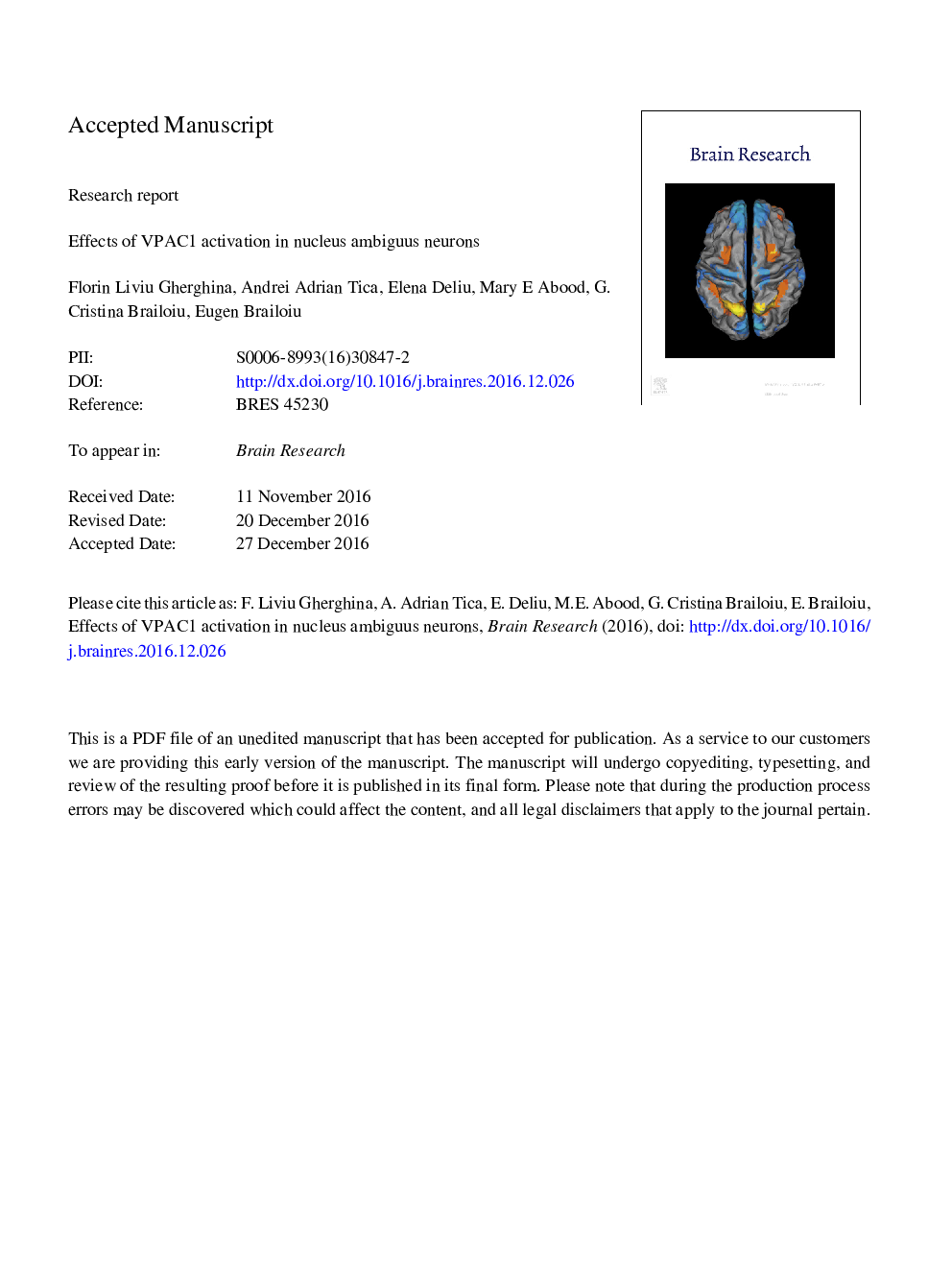| Article ID | Journal | Published Year | Pages | File Type |
|---|---|---|---|---|
| 5736563 | Brain Research | 2017 | 27 Pages |
Abstract
The pituitary adenylyl cyclase-activating polypeptide (PACAP) and its G protein-coupled receptors, PAC1, VPAC1 and VPAC2 form a system involved in a variety of biological processes. Although some sympathetic stimulatory effects of this system have been reported, its central cardiovascular regulatory properties are poorly characterized. VPAC1 receptors are expressed in the nucleus ambiguus (nAmb), a key center controlling cardiac parasympathetic tone. In this study, we report that selective VPAC1 activation in rhodamine-labeled cardiac vagal preganglionic neurons of the rat nAmb produces inositol 1,4,5-trisphosphate receptor-mediated Ca2+ mobilization, membrane depolarization and activation of P/Q-type Ca2+ channels. In vivo, this pathway converges onto transient reduction in heart rate of conscious rats. Therefore we demonstrate a VPAC1-dependent mechanism in the central parasympathetic regulation of the heart rate, adding to the complexity of PACAP-mediated cardiovascular modulation.
Keywords
Related Topics
Life Sciences
Neuroscience
Neuroscience (General)
Authors
Florin Liviu Gherghina, Andrei Adrian Tica, Elena Deliu, Mary E. Abood, G. Cristina Brailoiu, Eugen Brailoiu,
